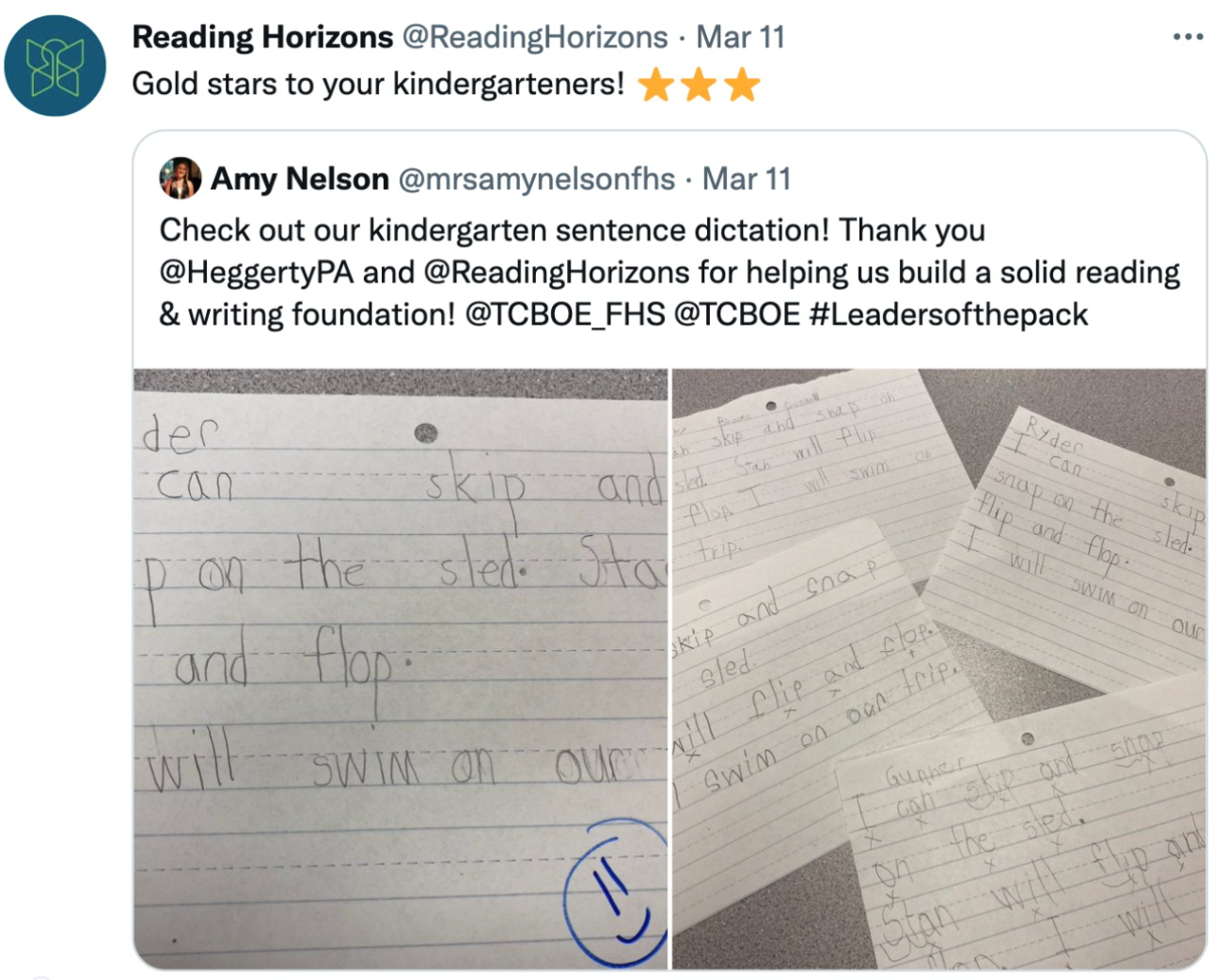We must teach our students how to read to have option-filled lives. Developing lifelong readers means teachers provide opportunities for their students to apply what they learn in decoding lessons to authentic text. Students thrive when we create opportunities to connect what they are learning in phonics with all types of written material as often as possible throughout the day.
At Reading Horizons, we often say that what is practiced in isolation will stay there. However, with these five tips from the outstanding educators who use our program you can support moving practice into context where it belongs. These transfer reading strategies can be used with any student who receives instruction aligned with the science of reading, so all you need is for your students to put these into practice.
These activities are a snapshot of what real educators do daily to build lifelong readers.
- The morning message is a great way to spiral reviewed skills in context. Take a couple of minutes for students to scan the message for previously taught skills and discuss. Carrie Jones, a first-grade teacher, says her students love reviewing previous skills; for some, it provides the needed practice to master them.

- Want to know the best way for students to practice their decoding skills in context? Use decodable readers! We love how Utah-based second-grade teacher Lindsay Kemeny shares her first-hand experience using decodables with her students in this don’t-miss podcast episode, “Decodable Text: Training Wheels for Reading,” from Literacy Talks. Decodable readers give students the needed practice and boost confidence, and all beginning and striving readers could use a big boost!

- Check out what Mrs. Nelson’s kindergarteners are doing with sentence dictation! This can be led by a teacher or, better yet, facilitated in partner work. Give students decodable sentences and have them take turns dictating a sentence to their partner while the other writes it down. Students love playing teacher and will relish the opportunity to check their partner’s work.

- Build skills from simple to complex. The Reading Horizons Transfer Cards intentionally move from the practiced skill in isolation into sentences. We love how Ambré Martin continues the process and has her students think up and write sentences using the skill words. She uses Seesaw to capture her students’ reading—and confidence!
- Centers are an excellent opportunity for students to engage in orthographic mapping and hands-on learning. Students in Ms. Resendez’s classroom are not only building their language skills but also their stamina to work independently. Way to go, kindergarteners!

These are just a small sampling of ideas from some of America’s best teachers. We’d love to hear how you are building transfers in your classroom. Spread your knowledge and let us know in the comments.
